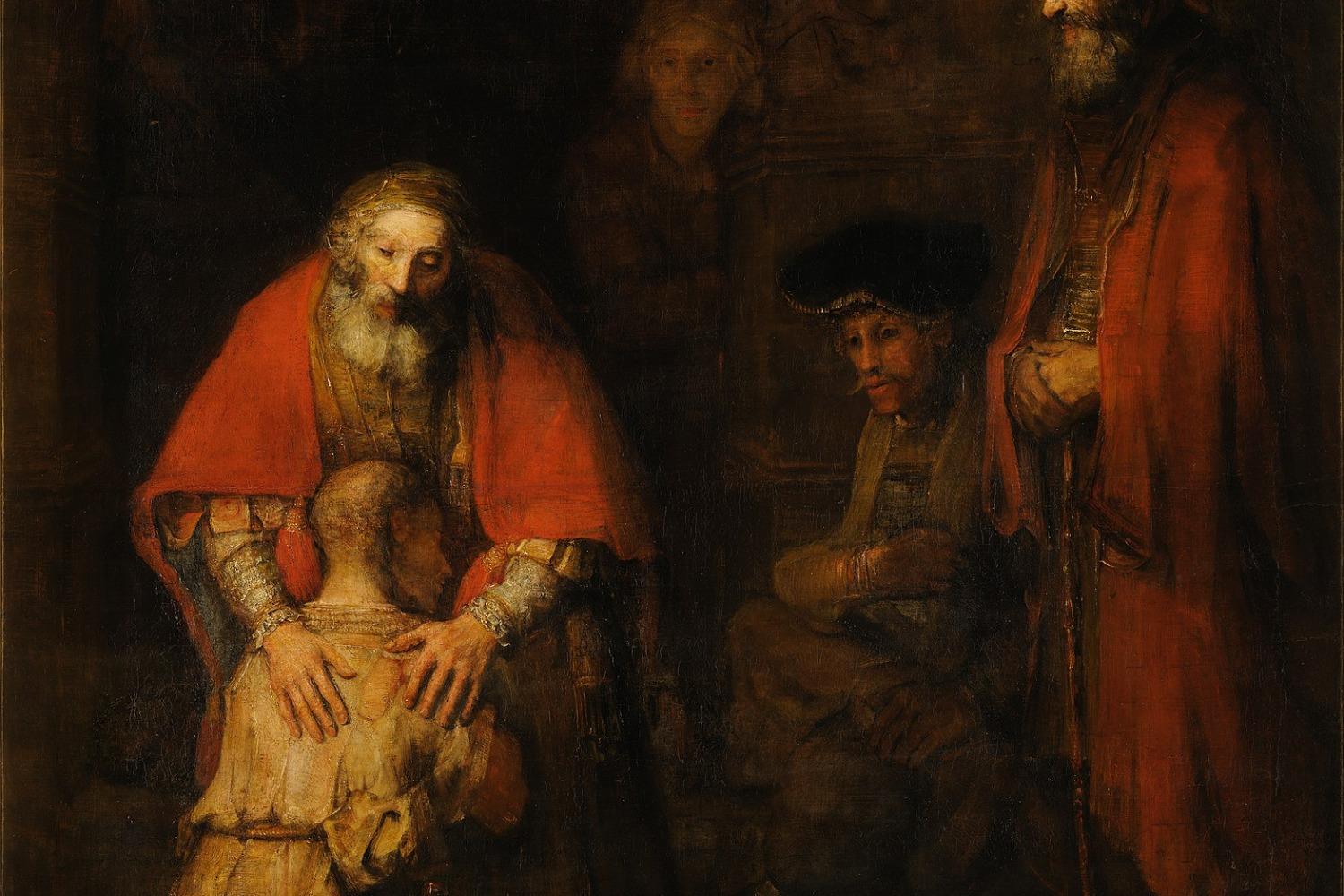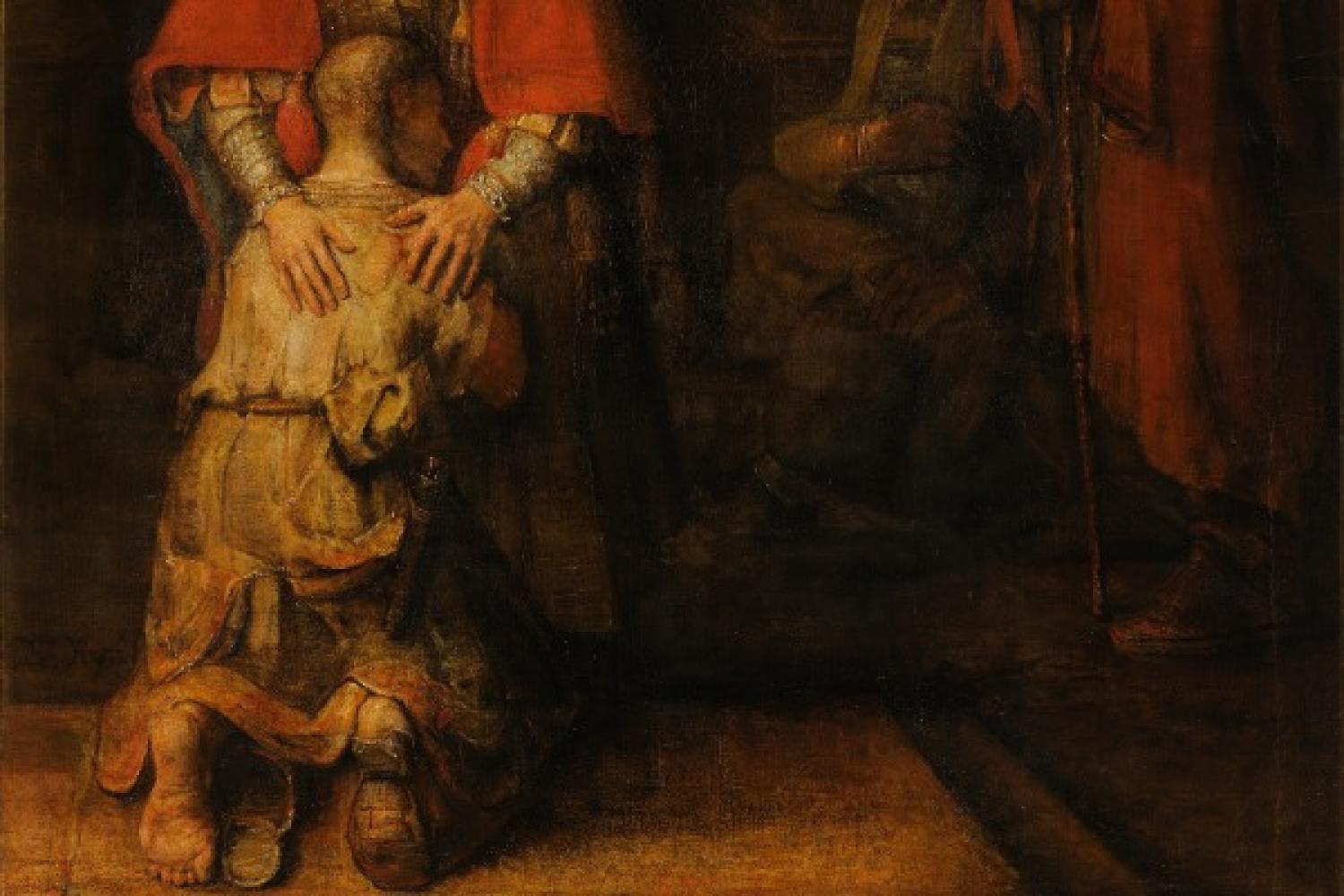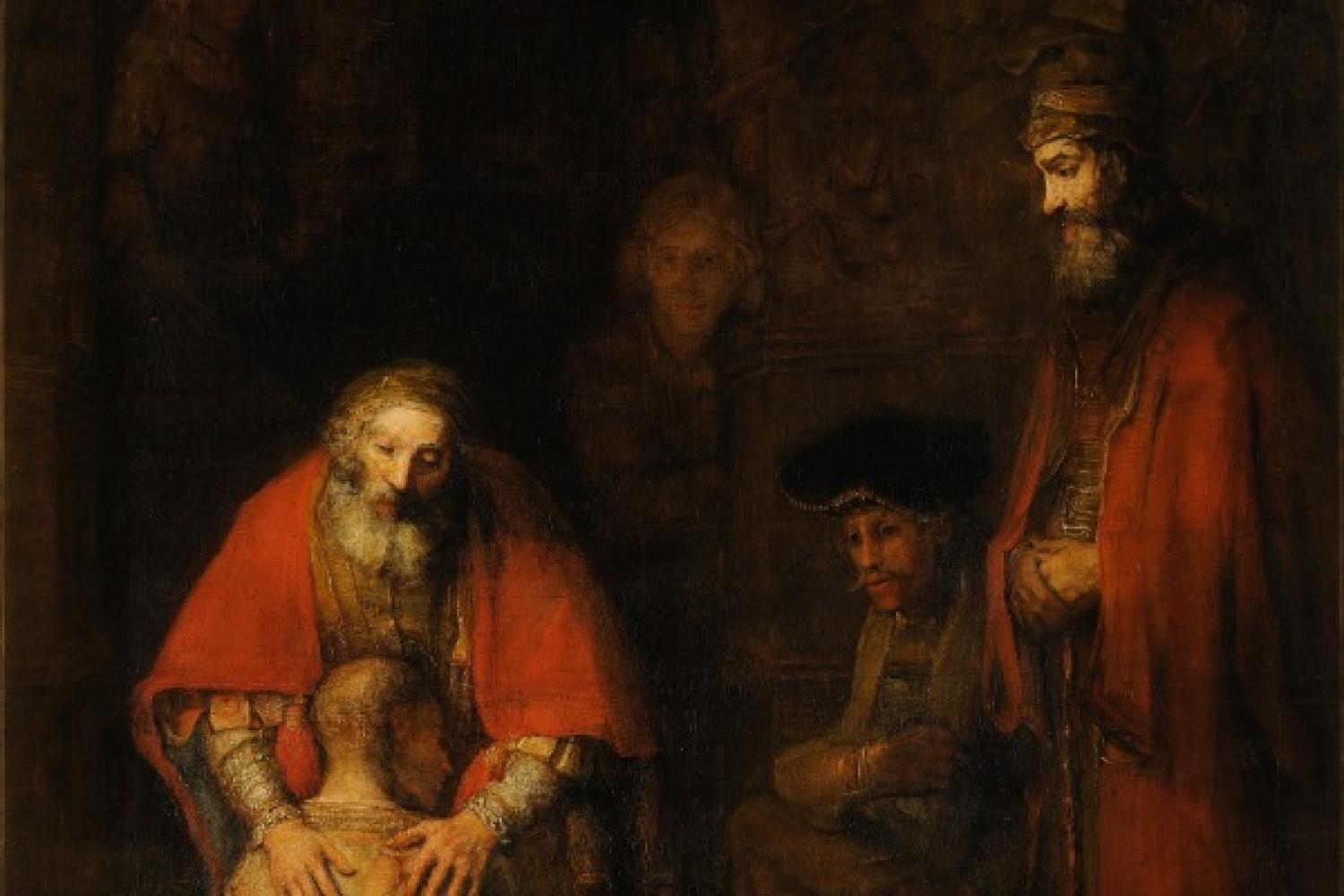
Rembrandt van Rijn, a Dutch Golden Age painter, is counted amongst the greatest artists ever to have lived. Born in Leiden in the Dutch Republic in 1606, Rembrandt moved to Amsterdam to further his artistic training. The subject matter of Rembrandt's paintings varied greatly, including religious scenes, portraits, landscapes, historical and mythological scenes, and even one seascape painting, The Storm on the Sea of Galilee.
Shortly before his death in 1669, Rembrandt completed one of his most famous works, The Return of the Prodigal Son, a culmination of sketches and drawings he had produced of the scene throughout previous decades.
The parable of the prodigal son is recounted in Luke 15. A young man asks that his father give him his inheritance, and he sets off to a far country, squandering his property on “loose living.” In the midst of the destitution and despair that follows, he resolves to return to his father:
In stark contrast to the worn clothing and the faded colors of the prodigal son are the vibrant colors of his father and elder brother – as the son predicted, even his father's servants are dressed more impressively than he is. While two of these servants can be seen is the center of the painting (one sitting beside the father and the other peering over the father's shoulder), a third servant can be glimpsed deep in the darkness, standing in the doorway (in the upper left corner).
More visible than the servants is the older brother. Dressed similarly to the father, the elder brother has remained faithful. At first, he refuses to go into the party being thrown for his brother: “Lo, these many years I have served you, and I never disobeyed your command; yet you never gave me a kid, that I might make merry with my friends. But when this son of yours came, who has devoured your living with harlots, you killed for him the fatted calf!” The father's response serves as the culmination of the scene: “Son, you are always with me, and all that is mine is yours. It was fitting to make merry and be glad, for this your brother was dead, and is alive; he was lost, and is found.” Within the father's response to the elder brother is an invitation, but the parable ends without telling us of his response. For this reason, Rembrandt places him to the side of the moving embrace of father and son, standing on the edge of the light shining upon the scene with his decision yet to be made, neither yet fully in the light nor fully in the dark.

The First Draught
To receive the Weekly Update in your inbox every week, along with our weekly Lectio Brevis providing insights into upcoming Mass readings, subscribe to The First Draught.

